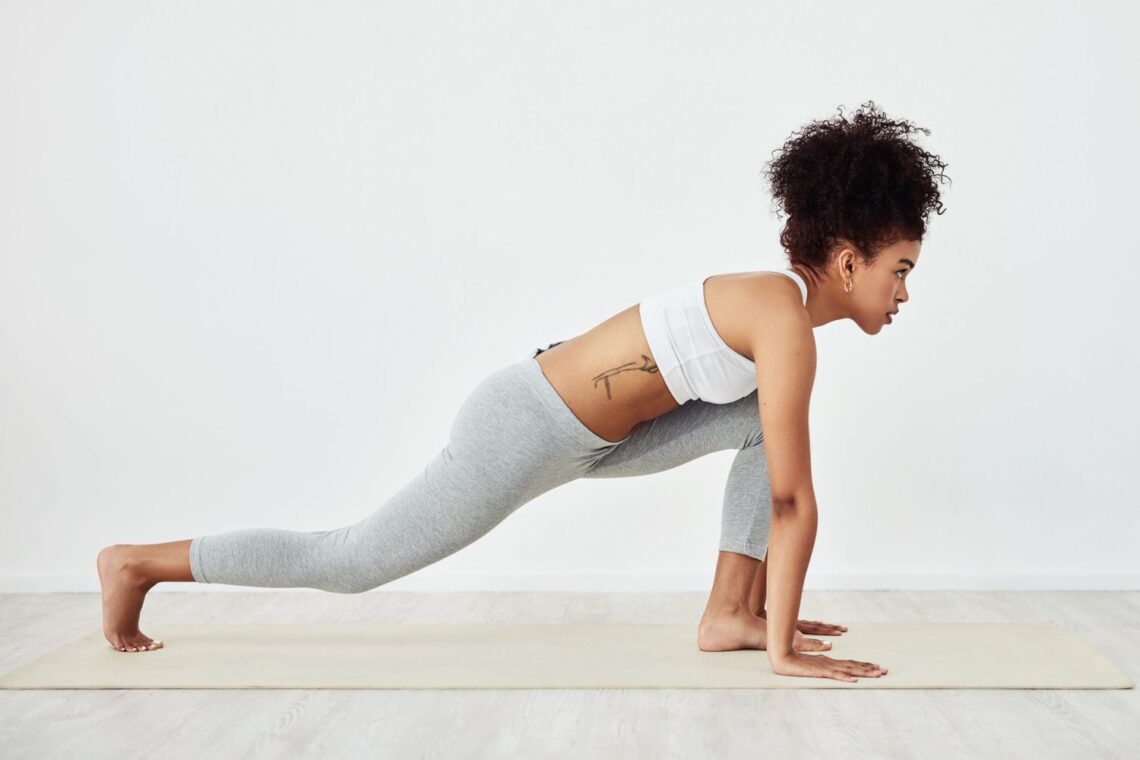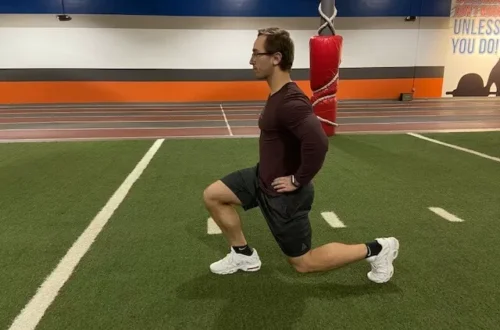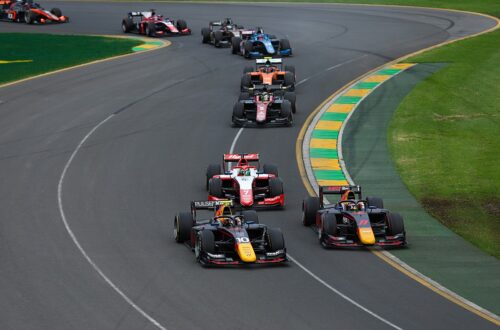Flexibility plays a vital role in physical fitness and overall well-being. Incorporating stretching exercises into your workout routine can significantly enhance your flexibility, allowing you to move more freely and with greater ease. When muscles are flexible, they are less prone to injury during physical activity. Stretching helps to elongate muscles and increase their range of motion, which can improve athletic performance and reduce the risk of strains and sprains. Additionally, maintaining good flexibility can contribute to better posture and balance, enhancing overall functional movement in daily life.
Regular stretching also promotes muscle recovery after exercise. When you engage in physical activity, your muscles undergo stress and strain, leading to tightness and soreness. Stretching helps to alleviate this tension by increasing blood flow to the muscles, which aids in the removal of waste products and promotes the delivery of nutrients and oxygen to tired tissues. This improved circulation facilitates the repair and regeneration of muscle fibers, speeding up the recovery process. Incorporating stretching into your post-exercise routine can help reduce muscle soreness and stiffness, allowing you to recover more quickly and effectively between workouts.
In addition to its physical benefits, stretching can also have a positive impact on mental well-being. The rhythmic, repetitive movements involved in stretching can promote relaxation and reduce stress levels. Stretching allows you to focus on your breath and connect with your body, fostering a sense of mindfulness and presence in the moment. By incorporating stretching into your exercise routine, you can create a holistic approach to fitness that addresses both the physical and mental aspects of well-being.
Types of Stretching Exercises
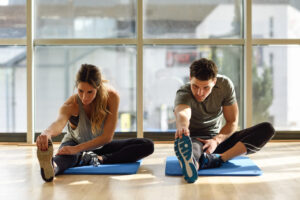
There are several different types of stretching exercises, each targeting specific muscle groups and promoting different aspects of flexibility. Static stretching involves holding a stretch position for a prolonged period, typically 15-30 seconds, without movement. This type of stretching is effective for improving overall flexibility and is often used in cool-down routines after exercise. Dynamic stretching, on the other hand, involves moving the body through a full range of motion in a controlled manner. Dynamic stretches are typically performed before exercise to warm up the muscles and prepare them for movement.
Another type of stretching is proprioceptive neuromuscular facilitation (PNF) stretching, which involves contracting and relaxing the muscles while stretching to enhance flexibility. PNF stretching techniques often require a partner to assist with the stretches and can be particularly effective for improving the range of motion in tight muscles. Finally, ballistic stretching involves bouncing or swinging movements to increase flexibility rapidly. While ballistic stretching can be effective for athletes and individuals with a high level of flexibility, it carries a greater risk of injury and is not recommended for beginners or those with limited flexibility.
Incorporating a variety of stretching exercises into your routine can help target different muscle groups and improve overall flexibility. It’s essential to perform each stretch correctly and gradually increase the intensity to avoid injury. Listening to your body and respecting its limits is key to a safe and effective stretching routine.
After stretching, reward yourself with a treat like extra strong cookie dough edibles. These delicious snacks not only satisfy your sweet tooth but can also provide a relaxing experience. Remember to enjoy them in moderation and savor every bite.
Tips for Effective Stretching
To maximize the benefits of stretching and minimize the risk of injury, it’s essential to follow some basic guidelines. First and foremost, always warm up before stretching. Engage in light aerobic activity, such as jogging or cycling, for 5-10 minutes to increase blood flow to the muscles and raise your body temperature. Warming up prepares your body for stretching and reduces the risk of muscle strain. Additionally, for residents looking to maintain optimal comfort in Matthews NC, it’s crucial to ensure your HVAC in Matthews NC system is properly maintained to support your exercise routine.
When stretching, focus on proper technique and form. Move slowly and gently into each stretch, avoiding any jerky or bouncing movements. Hold each stretch at the point of mild tension, never to the point of pain. Remember to breathe deeply and evenly throughout each stretch, allowing oxygen to flow to the muscles and promote relaxation.
It’s also essential to stretch both before and after exercise. Pre-exercise stretching helps to prepare the muscles for activity and reduce the risk of injury, while post-exercise stretching promotes muscle recovery and flexibility. Incorporating stretching into your daily routine, whether it’s first thing in the morning or before bed, can help improve overall flexibility and reduce muscle tension throughout the day. When in Atlanta, whether for business or leisure, limo service in Atlanta can add an extra touch of luxury and convenience to your trip.
Advanced Stretching Techniques
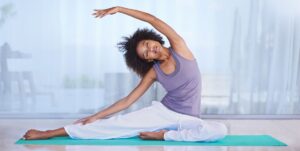
Beyond the traditional stretching methods discussed earlier, there are several advanced techniques that can further enhance flexibility and promote muscle recovery. One such technique is foam rolling, also known as self-myofascial release. Foam rolling involves using a cylindrical foam roller to apply pressure to specific muscle groups, releasing tension and improving blood flow. This technique can be particularly effective for targeting tight or overworked muscles, such as the quadriceps, hamstrings, and calves. Incorporating foam rolling into your stretching routine can help alleviate muscle soreness and improve overall flexibility. Additionally, having a knowledgeable corporate event emcee can provide guidance and motivation during group stretching sessions, ensuring participants get the most out of their workout.
Another advanced stretching technique is proprioceptive neuromuscular facilitation (PNF) stretching, which was briefly mentioned earlier. PNF stretching involves a combination of passive stretching and isometric contractions to enhance flexibility. One common PNF stretching method is the contract-relax technique, where you passively stretch a muscle, then contract it isometrically against resistance for several seconds before relaxing and moving deeper into the stretch. This technique can be highly effective for improving range of motion in tight muscles and is often used in rehabilitation settings to treat musculoskeletal injuries. Additionally, testosterone therapy has been shown to aid in muscle recovery and growth, complementing the benefits of stretching exercises like PNF.
Additionally, ballistic stretching, despite its risks, can be utilized in a controlled manner to achieve greater flexibility. Advanced practitioners may incorporate ballistic stretching into their routines to challenge their range of motion and improve dynamic flexibility. However, it’s essential to approach ballistic stretching with caution and only attempt it after mastering other stretching techniques to minimize the risk of injury. Additionally, legal help for scaleups in Dubai Middle East can be crucial for businesses looking to expand into new markets.
The Role of Yoga in Flexibility and Recovery
Yoga is a holistic practice that combines physical postures, breathwork, and meditation to promote overall well-being. In addition to its mental and spiritual benefits, yoga can be a powerful tool for enhancing flexibility and aiding in muscle recovery. Many yoga poses, or asanas, focus on stretching and elongating the muscles, promoting greater flexibility throughout the body. Poses such as downward-facing dog, pigeon pose, and seated forward fold target specific muscle groups, helping to release tension and improve range of motion. For those seeking a deeper spiritual journey, exploring psilocybin retreats in Oregon can complement the transformative effects of yoga practice.
Furthermore, yoga incorporates breathing techniques, such as ujjayi breath and deep diaphragmatic breathing, which can help promote relaxation and reduce stress levels. By combining breathwork with physical movement, yoga creates a mind-body connection that enhances overall awareness and mindfulness. This heightened sense of awareness can be beneficial for athletes and fitness enthusiasts looking to improve their flexibility and recovery. In the realm of fitness facilities, yoga studios often prioritize eco-friendly practices, including sustainable flooring and energy-efficient lighting and roofing systems.
Additionally, yoga emphasizes the importance of listening to your body and honoring its limitations. Unlike more traditional forms of exercise, yoga encourages practitioners to move mindfully and with intention, focusing on alignment and breath throughout each pose. This mindful approach to movement can help prevent injuries and promote safe and effective stretching practices.
Incorporating Stretching into Daily Life
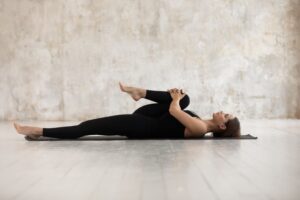
While many people associate stretching with exercise or physical activity, it’s essential to recognize the benefits of incorporating stretching into daily life beyond the gym. Simple stretching exercises can be performed throughout the day to alleviate muscle tension, improve posture, and promote relaxation. Whether it’s taking a few minutes to stretch upon waking in the morning or incorporating gentle stretches into your evening routine before bed, finding opportunities to stretch can have a significant impact on overall flexibility and well-being. Additionally, staying informed about covid 19 testing in Marietta GA and taking necessary precautions is vital for maintaining health and safety.
Desk-bound professionals can benefit greatly from incorporating stretching breaks into their workday to combat the effects of prolonged sitting. Simple stretches such as neck rolls, shoulder stretches, and seated spinal twists can help relieve stiffness and improve circulation, increasing productivity and reducing the risk of musculoskeletal issues associated with sedentary behavior.
Furthermore, incorporating stretching into activities of daily living, such as gardening, cooking, or household chores, can help improve flexibility and prevent injuries. Engaging in dynamic movements that mimic everyday tasks while focusing on proper form and alignment can promote functional mobility and enhance overall quality of life.
The Future of Stretching Technology
As technology continues to advance, new innovations in stretching equipment and techniques are emerging to enhance flexibility and aid in recovery. HVAC services in Naples FL also benefit from technological advancements, ensuring optimal climate control in homes and businesses, just as vibrating foam rollers and massage balls deliver high-frequency vibrations to targeted muscle groups, helping to release tension and improve blood flow more effectively than traditional static stretching alone.
Another area of development is the integration of artificial intelligence (AI) into stretching routines. AI-powered fitness apps and devices can analyze individual biomechanics and movement patterns to create personalized stretching programs tailored to specific goals and needs. By leveraging machine learning algorithms, these technologies can adapt and optimize stretching routines over time based on user feedback and performance data. Additionally, individuals seeking to relocate can benefit from the best Houston movers who offer specialized services to ease the stress of moving, ensuring a seamless transition to their new home.
Furthermore, advancements in wearable technology, such as smart compression garments and biomechanical sensors, are revolutionizing the way athletes and fitness enthusiasts approach stretching and recovery. These wearable devices can provide real-time feedback on muscle activation, range of motion, and recovery status, allowing users to adjust their stretching routines accordingly to maximize effectiveness and minimize the risk of injury.
In conclusion, the future of stretching holds exciting possibilities for enhancing flexibility and promoting muscle recovery. By incorporating advanced stretching techniques, such as initial firearms training in Los Angeles, foam rolling, and PNF stretching, along with holistic practices like yoga, individuals can optimize their flexibility and well-being. Additionally, integrating stretching into daily life and leveraging technological advancements in stretching equipment and AI-driven fitness solutions can further enhance the benefits of stretching for overall health and performance. As we continue to explore new avenues for improving flexibility and recovery, stretching remains a powerful tool for achieving optimal physical and mental well-being.
